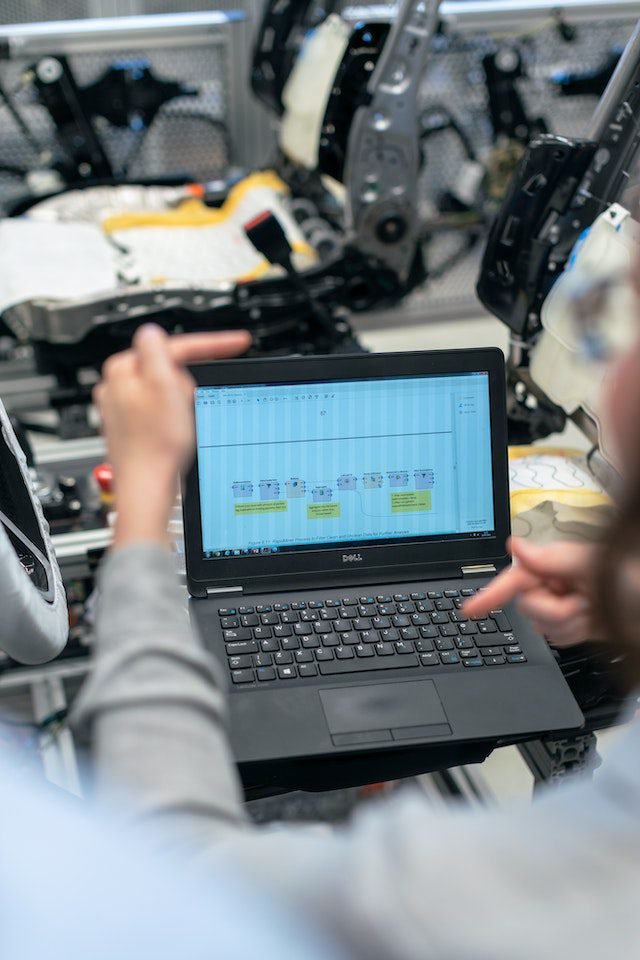Last Updated on February 16, 2024 by Nasir Hanif
Are you confused about the difference between end-to-end testing and system testing? If so, then you’ve come to the right place. Both methods of testing focus on verifying the integrity and accuracy of the system, yet they have distinct differences that can make a difference in your results.
This blog post will discuss the key differences between end-to-end testing and system testing, as well as how these two types of tests can help you better understand your application’s overall usability. Uncovering each test’s purpose and understanding when to use it will ensure you gain maximum value from your quality assurance processes. So let’s dive in and take a look at the essential differences between end-to-end testing and system testing.
Table of Contents
What is End-to-end testing?
End-to-end testing is used to test the overall behavior of a software application. It involves running tests on an entire system, including the user interface, data flow, business logic, and other components, to check whether the application is functioning correctly from start to finish. This testing is carried out by simulating various user scenarios and observing the output of each scenario.
For example, in an online retail store, end-to-end testing could involve adding items to a shopping cart, proceeding to checkout, entering payment information, and verifying that the order is successfully placed and delivered.
Another example could be configuring email settings for a web app and verifying that emails are sent successfully from the app. End-to-end testing helps identify potential issues within an application by giving visibility into how every aspect of it works together when put under pressure with real user scenarios. The goal is to ensure that the application meets its functional requirements.
What is System Testing?
System testing is an important component of software and application development as it helps uncover any flaws or discrepancies within the system. In system testing, the entirety of a software or application is tested in one go instead of individual parts. This ensures that the product’s features are behaving properly as a whole and interacting with each other correctly before release.
As such, during system tests, developers may take into account parameters such as robustness, usability, and scalability to ensure that the overall experience is satisfactory.
An example would be running test scenarios with sample data to check how the system behaves under various loads or stress levels. Furthermore, given that many applications are built with databases, comprehensive integration tests may also need to be performed to ensure that data is being stored and retrieved accurately.
All of these components must work together in perfect harmony for a successful product launch; thus, system testing plays an integral role in quality assurance.
Difference between System Testing and End-to-end Testing:
| System Testing | End-to-end Testing |
| System testing only tests the specific software system, ensuring it correctly processes data and functions when all its parts are combined together. For example, an online booking system will be tested to ensure customer details are correctly entered into the database and that bookings can be made smoothly; whereas an accounting system will check transactions can be recorded accurately, and reports generated correctly. | End-to-end testing ensures the system and the connected systems both perform correctly by simulating real-world user scenarios. This helps to ensure any issues are caught early, giving developers assurance that the whole system functions correctly in production environment. For example, if an online order system connects with a shipping provider, end-to-end testing would verify that orders can be transferred successfully, payment data is passed securely, and delivery status notifications are sent accurately. Similarly, if an organization adopts a new third-party vendor to handle customer service, End-to-End testing would ensure customers can submit tickets, agents have access to client information within the vendor’s application, and customer conversations are properly documented. |
| In system testing, the functionality of the software is tested to evaluate its operational performance, accuracy, and completeness. It is done after unit and integration testing and generally involves more than one module or subsystem of a system. Examples of system tests include stress tests, end-to-end tests, configuration tests, usability tests, and compatibility tests. Stress testing checks if the system can handle high load levels by simulating large numbers of concurrent users on a single server; end-to-end tests evaluate how two or more integrated systems interact with each other; configuration test examines how the application responds to different hardware/software configurations; usability test assesses user friendliness; compatibility test verifies whether the software works correctly on different operating systems or browsers, etc., thus ensuring a smooth running user experience. | In end-to-end testing, flow from, end-to-end is tested to ensure that data flows through interconnected components correctly. For example, a ticket booking system may consist of components like a payment gateway, email notifications, and coupon codes. In end-to-end testing, each component is tested together with other components in a system to ensure they are functioning properly and communicating correctly with one another. Another example would be an online store where customers can choose products, add them to their carts, and eventually checkout; this process should be tested in end-to-end testing to ensure the customer’s information is passed along correctly between the front end (website), back end (database), and payment gateway. |
| System testing involves a series of tests to check the overall functionality of the system, including user interface features, compatibility with other systems, performance under various workloads, and compliance with industry standards. An example of this would be a web-based shopping cart application: during system testing, testers would verify its features, such as secure login and payment processing, are functioning correctly within its environment and that it complies with applicable regulations such as PCI DSS. System testing also checks for any bugs or unexpected behavior which could lead to functional problems for users. | End-to-End testing validates the interfaces of all parts of the software to ensure there are no errors present. To illustrate, a hypothetical web application might involve an interface that incorporates several components, such as the database, user authentication, payment gateway, and file transfer. End-to-End testing would verify that each component interacts properly with each other and with the user to guarantee smooth functionality. |
| In system testing, knowledge of interconnected systems is not required as the main focus is to ensure that the specified requirements for a single or set of connected systems are met. For example, when conducting system testing for an online shopping application, one does not need to understand how the payment gateway is. implemented or integrated with the application in order to run tests against it. Instead, they just need to ensure that when users enter their payment information, it gets accepted and processed successfully. | End-to-end testing requires knowledge about interconnected systems, as it involves examining how an entire system or product performs from start to finish in its normal environment. For example, to test an online ordering system properly, testers need to understand the different components that are connected: the user interface for placing orders online, the database for storing products and customer information, the payment gateway for securely processing payments, etc. All of these components need to interact together seamlessly in order for the end result—successfully placed orders—to be produced. End-to-end testing ensures that all of these components are tested together and working properly both separately and as a unit. |
| System testing is carried out once integration testing has been completed, as it ensures that all components of the system are working together correctly. For example, if a web-based system contains a user login module and a shopping cart module, then integration testing would ensure that both modules interact with each other properly. System testing would then be used to test user interaction on the entire website and to make sure that all components work together without any problems arising. | End-to-end tests are performed after system tests have been completed. For example, in a restaurant ordering system, end-to-end tests will check that the order is received and processed correctly from start to finish, including payment authorization, the printing of a receipt, and the actual delivery of food. |
| System Testing requires both manual and automated methods since automation can offer more speed, accuracy, and flexibility while manual methods are useful when exploring unknown situations. For example, an automated system test could be used to check basic functions of an application, such as login screens or user permissions, whereas manual testing may be necessary to confirm that these features work properly in edge cases such as a large number of users or complex data sets. Ultimately, both types of testing should be combined to maximize coverage and ensure the highest quality results. | End-to-End Testing is performed manually to simulate user activity, ensuring that the software meets its requirements. For example, when testing a web application, End-to-End manual Testing would involve verifying that data entered into a form on the front end is processed accurately on the back end, such as making sure an order placed through an eCommerce website makes its way to customers successfully. |
| System testing is the superset of end-to-end testing, which tests the complete system from start to finish. For example, let’s say you have customer relationship management (CRM) software. End-to-end testing would involve checking every step within the CRM workflow, such as logging in as an administrator, setting up a customer record, updating contact information, and so on. System testing would go further by also verifying other aspects of the system, such as scalability (how well it handles additional users), reliability (its ability to operate without interruption), and performance (its speed). | End-to-End Testing is considered as a subset of system testing. For example, let’s say you’re building an eCommerce website. As part of your system testing, you would want to make sure that users can successfully place orders on the site by adding items to their cart, entering payment information, and submitting their orders. An end-to-end test would involve simulating this entire process and verifying that it works correctly from start to finish. In short, end-to-end testing is a form of system testing that focuses on the complete process through which a user interacts with the system. |
Although both processes share some similarities, they have distinct differences that should be considered when performing either type of test.
There are many tools available in the market for System testing and End to end testing, but one tool that will make your testing easier is LambdaTest. It is a cloud-based platform that helps in testing across 3000+ browsers and real devices with different OS combinations.
How to perform System testing using LambdaTest?
LambdaTest is a great platform to use for system testing. It offers easy access to the cloud environment, simplifying software testing and making it more manageable and scalable. You can use it for mobile and web testing, as well as for manual or automation tests.
With LambdaTest’s browser farm, you can test in different 3000+ browsers like Chrome and Firefox, while the device farm enables you to test across multiple platforms such as Android, iOS, and Windows.
Furthermore, features like Selenium grid integration and terminal access help expand the scope of your system tests quickly. With LambdaTest’s extensive range of features, you can quickly set up tests on different environments with greater speed and accuracy than manual or in-house testing.
With the LambdaTest platform, live-interactive System testing of web applications can be performed in a few easy steps.
- First, sign in to the account or register for free if you don’t already have one. Then, navigate to Real-Time Testing > Browser Testing from the left sidebar.
- Enter the URL and select the browser version, operating system, and resolution required before clicking ‘START’. A cloud-based virtual machine is launched with a real operating system where all the tests can be conducted. Moreover, an additional benefit is that the LambdaTest platform also has a real device cloud which ensures accurate results by testing web and mobile applications in actual environmental conditions.
Why LambdaTest for End-to-End testing?
Developers are struggling to scale end-to-end tests and monitor flaky tests due to limited resources, time constraints, and a lack of reliable testing platforms.
Businesses are at risk of wasting countless hours and resources trying to run manual tests when they could be utilizing the latest automated technologies. Without a credible and efficient test suite, developers are caught in a constant cycle of inefficient workflows.
LambdaTest is an all-in-one end-to-end testing platform for Selenium, Cypress, Playwright, Puppeteer, and more that enables developers to run tests on 3000+ browsers and OS combinations with ease. Its features include dashboards to monitor flaky tests and parallel tests at scale, along with its new HyperTest offering, which optimizes performance. With such advanced capabilities, you can ensure that your business is running on top-notch quality assurance standards. All of this makes LambdaTest a great go-to for all your end-to-end testing needs.
Conclusion
In conclusion, end-to-end testing, and system testing are both important components of the software testing process. Both types of tests should be performed to provide a comprehensive evaluation of the system’s functionality and performance. By understanding the differences between end-to-end and system testing, testers can ensure that the software is thoroughly tested and ready for deployment.
Thanks for reading!
Apart from that, if you are interested to know about Helpful API Testing Tools & Methods in 2023 then visit our Tech category.
















